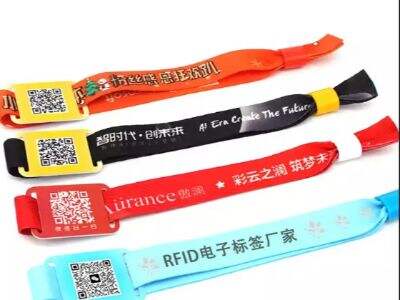There are 2 technologies of wristbands that can comprise wearable technology, tags and we can call them either RFID Wristbands or NFC Wristbands. Although they may seem very similar in appearance, RFID vs NFC wristbands are differ a little bit in function and how they can be used depending on the case — Today, we will look deeper into what really distinguish them from each other.
RFID vs. NFC wristbands explained
RFID (Radio Frequency Identification) and NFC (Near Field Communication). In both RFID and NFC, radio waves are used to communicate information between devices, although the specific means used by RFID technology and NFC technology doing this differ somewhat. RFID wristbands need a reader to send and receive information, whereas JHCD RFID inlay can exchange data with any other NFC-enabled device in a couple of centimeters.
Because RFID wristbands can include security features or contain more data for more complex tasks. RFID wristbands can be used for access control at events — or simply as a way to go cashless. On the other hand, NFC wristbands are usually used to transfer data between devices virtually at an ease. JHCD LF Sticker Tags, for example can be used to share content between smartphones or make payments quickly at a store.
Contrasting RFID and NFC wristbands
Range is one of the primary differences in wristband capabilities between RFID and NFC. RFID wristbands usually have a greater range compared to NFC wristbands, with wider applications that can be accessed through those bands. But, a longer range can also mean that RFID wristbands are more likely to be disrupted by other stuff. NFC wristbands on the other have a very, very limited range making them excellent for close proximal communication in crowded areas.
Why devices support RFID OR NFC only?
The purpose of some devices is to accommodate the RFID and NFC technology, which makes them only compatible with this advanced technology. If a device has only RFID or NFC technology, this device may not able to read NFC wristbands, and vice versa since it is limited up to specific protocol. Hence it is necessary to see what technology that device supports before using the wristband.
What to keep in mind when choosing between RFID and NFC?
What to consider when turning between RFID and NFC technology One function is range — if you have to read longer range for use in your app, RFID wristband may the best suited. The second criterion is the compatibility of these tracking technologies with your intended wristband devices. Take a look at the security and data store abilities of these two as well, so far your Web site features you will be safe with this service.
In summary, RFID wristbands work together with NFC wristbands separately, two different types of wearable technology respond to the needs in different applications. RFID wristbands would be best if you need the long range and extra security that is provided or JHCD RFlD Wristbands which will help communicate between devices with less functionality a lot quicker and easier. Based on features like range, compatibility, and security you can decide about the technology that will be most suitable for your use-case.

 EN
EN
 RU
RU DE
DE FR
FR JA
JA KO
KO ES
ES IT
IT PT
PT AR
AR


